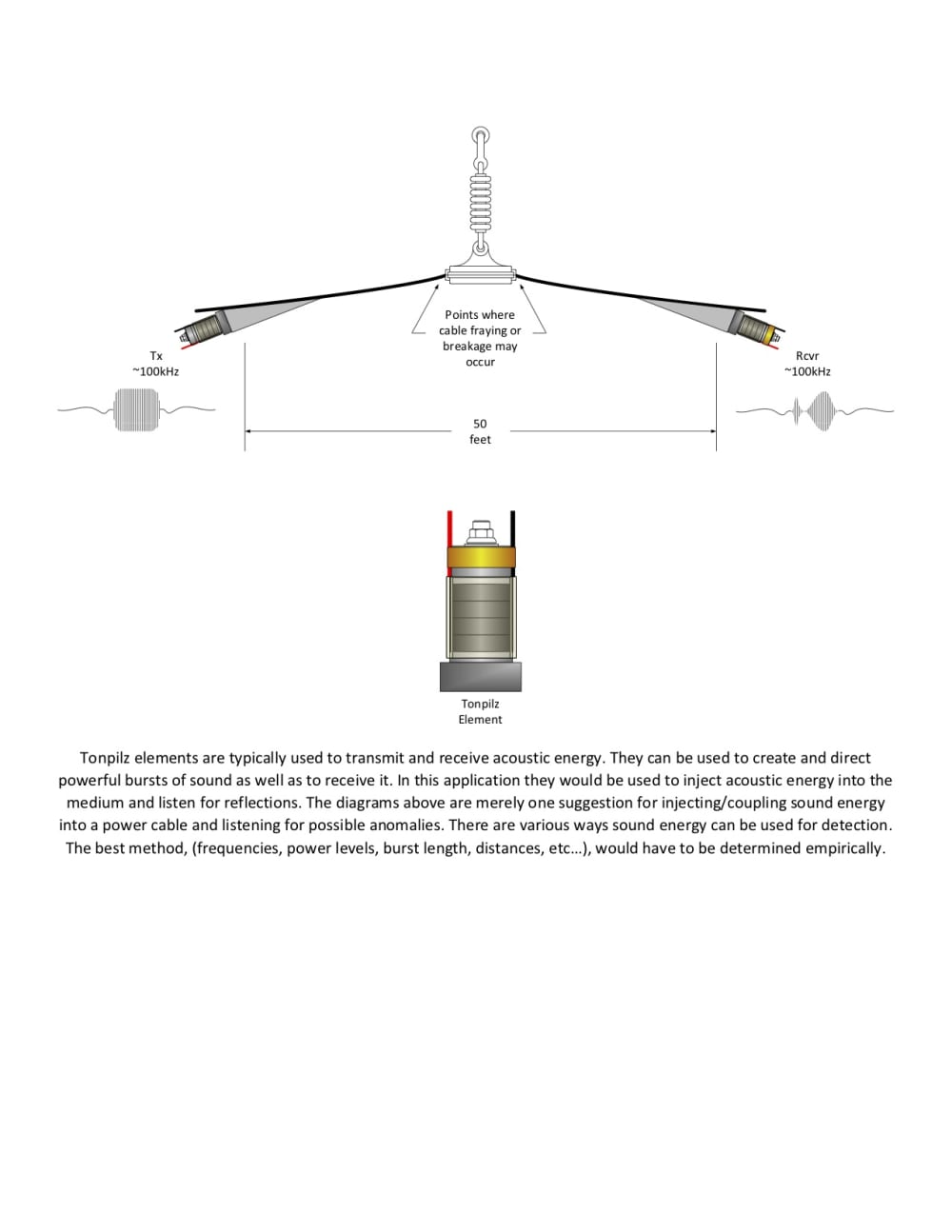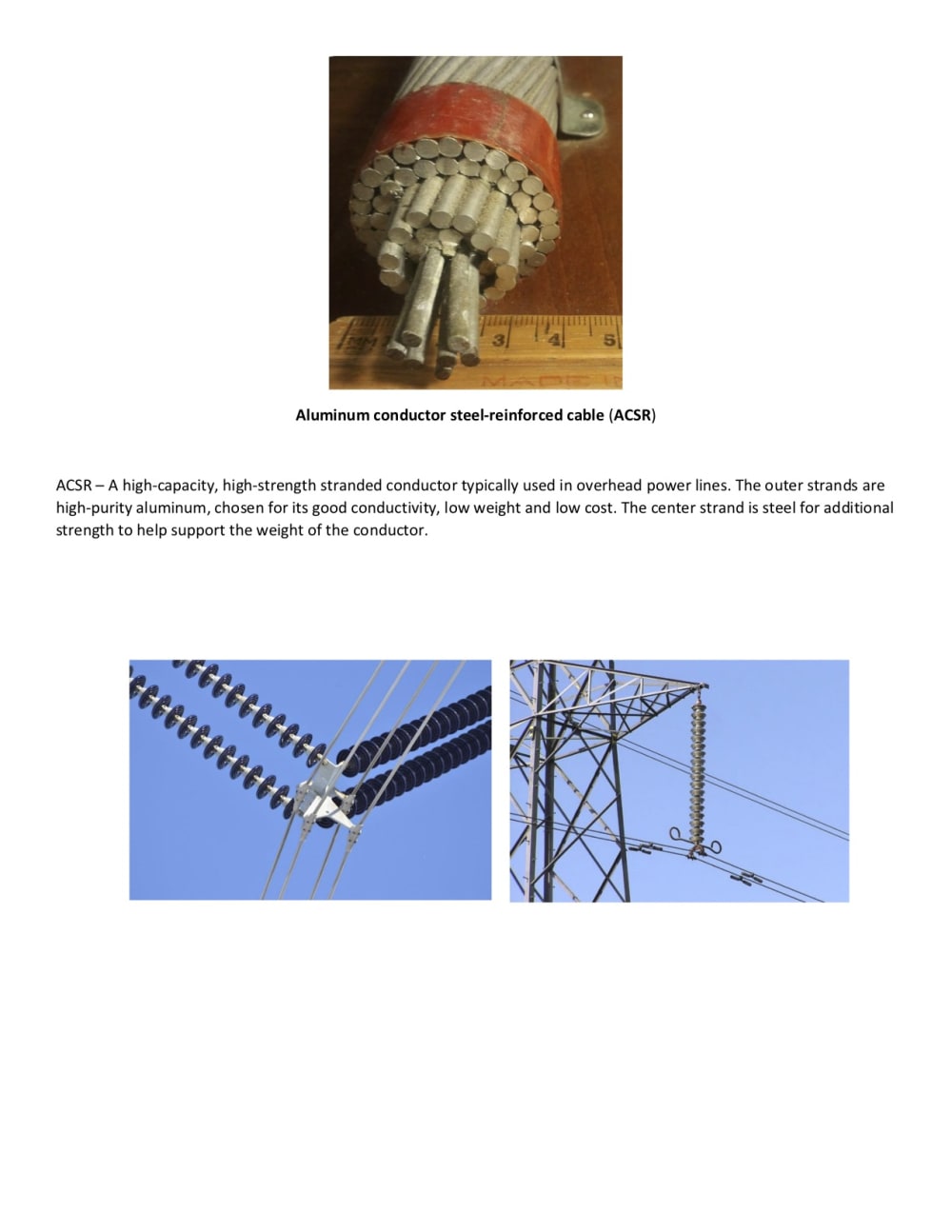A monitoring system to allow early detection of damage to high tension power lines. Using Acoustical Emission (AE) techniques on high tension power lines for early detection of internal damage or fraying before the cable breaks.
Cable "Galloping" (low frequency, large amplitude, vibration caused by high winds), along with deformation caused by icing and other mechanical stresses on high tension power lines, can cause a degradation of their physical integrity. This can lead to "fraying", "birdcaging" and eventually causing them to break allowing live HV (High Voltage) cables to fall to the ground. This damage, or fraying, is often visibly and electrically undetectable until it's too late and cable breakage is imminent. After falling to the ground these severed HV cables are an extreme fire threat as well as an electrocution hazard. In response to the recent high tension power line failures in California that have caused so many fires I'm proposing investigating an idea for a solution to detect fraying cables well before they break. The idea employs bursts of acoustic energy transmitted through the ACSR (Aluminum Conductor Steel-Reinforced) cable to detect areas of fraying in the cable before it fractures. Aluminum and steel will conduct sound energy quite well and can do this regardless of whether they are elevated (carrying high voltage). This could be performed similar to how SONAR works by transmitting a ping and looking for any reflected energy.
In this method increases in reflected energy indicate increased resistance to sound waves indicating an area of possible concern. New condition cables would be base lined and have their acoustic signature stored. This signature would then be continuously compared (at predetermined time intervals) with the latest acoustic signature to detect differences that might show an anomaly and indicate an area of possible damage. There are several other methods of using Acoustic Emission for detecting cable anomalies (borrowed largely from existing bridge support cable testing techniques) that would be explored as well.
Like this entry?
-
About the Entrant
- Name:Charles Englehart
- Type of entry:individual
- Software used for this entry:Visio
- Patent status:none





